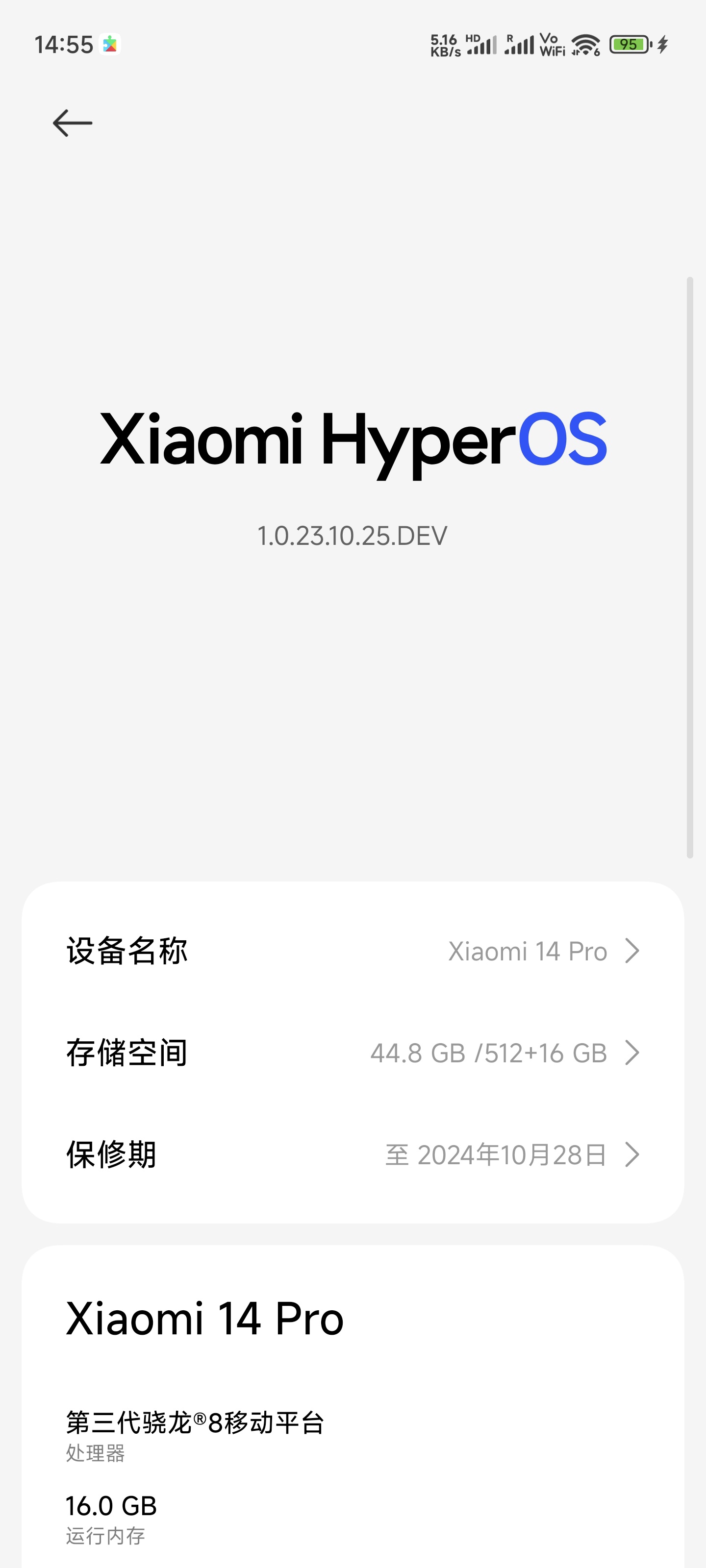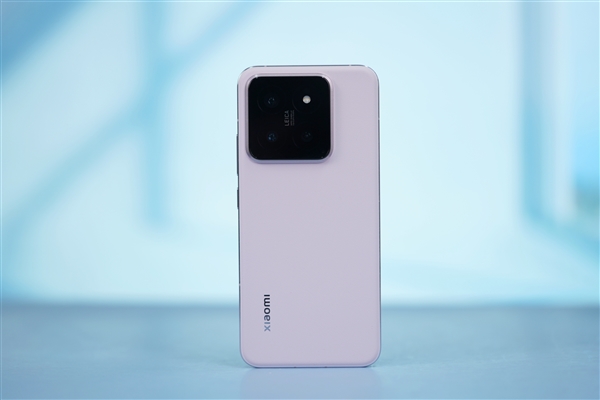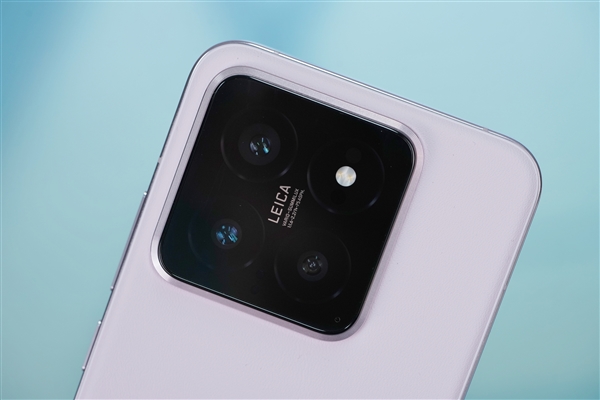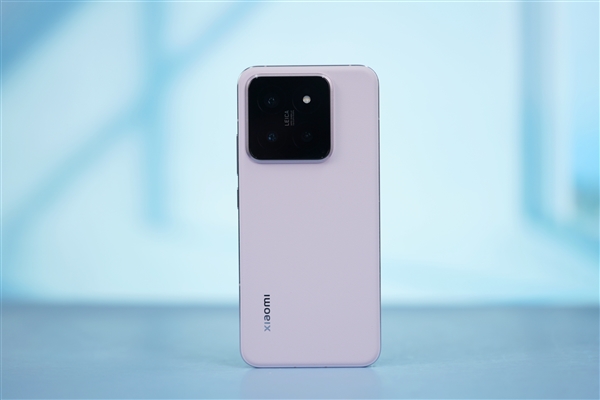
php editor Youzi will introduce to you how to insert dual SIM cards on Xiaomi Mi 14. Xiaomi Mi 14 is a powerful mobile phone that supports dual-SIM dual standby function, allowing users to use two SIM cards at the same time. The method of inserting dual SIM cards is very simple. You only need to insert two SIM cards into the card slot of the mobile phone. However, it should be noted that the card slot location of different mobile phones may be different, so before inserting the card, it is recommended to carefully read the mobile phone manual or find the location of the card in the phone settings. I hope the above content is helpful to everyone!
How to insert dual SIM cards in Xiaomi Mi 14?
Xiaomi 14 supports dual-SIM dual-standby function. You can insert dual-SIM according to the following steps:
The first step is to shut down: first shut down, then long press the power button and select "Shutdown".
The second step is to open the SIM card slot: use a small needle or SIM card removal pin to insert into the small hole, press gently to pop out the SIM card slot.
The third step is to insert the SIM card: Insert the SIM card into the corresponding card slot. Generally speaking, card slot 1 usually supports 4G network signals, and card slot 2 supports 2G network signals or expansion memory cards. Choose the card slot to insert according to your needs.
Step 4. Close the SIM card slot: Push the SIM card slot back into the phone and make sure it is securely in place.
The fifth step, power on: long press the power button, select "power on", the phone will start and complete the process of identifying the SIM card.
All the information on how to insert dual SIM cards in Xiaomi Mi 14 has been compiled above. As long as you read it carefully, you will definitely be able to solve this problem. Of course, if you have any questions about Xiaomi phones, you can browse them on our website.
The above is the detailed content of How to insert dual SIM cards in Xiaomi Mi 14?. For more information, please follow other related articles on the PHP Chinese website!
 小米 14 系列手机推送 HyperOS 开发版,新增小爱输入助手、AI 写真、AI 搜图、实时字幕Oct 31, 2023 pm 06:25 PM
小米 14 系列手机推送 HyperOS 开发版,新增小爱输入助手、AI 写真、AI 搜图、实时字幕Oct 31, 2023 pm 06:25 PM本站10月31日消息,据本站网友反馈,小米14系列手机推送HyperOS开发版,版本号OS1.0.23.10.25.DEV,一期内测包含功能小爱输入助手、AI写真、AI搜图技术是指利用人工智能技术来搜索和识别图像。通过对图像进行分析和比对,AI搜图可以找到相似的或相同的图像。这项技术已经在各种领域得到应用,包括图像搜索引擎、反盗版保护、社交媒体分析等。AI搜图的发展不仅提高了图像搜索的准确性和效率,还为用户带来了更好的体验和便利。未来随着技术的进一步发展,AI搜图有望在更多的领域发挥重要作用、实
 小米14和14PRO区别Jan 11, 2024 pm 04:29 PM
小米14和14PRO区别Jan 11, 2024 pm 04:29 PM小米14和14PRO区别:1、外观设计;2、屏幕;3、处理器;4、摄像头;5、电池;6、其他配置。详细介绍:1、外观设计,小米14采用了较为简洁的设计,整体看起来比较清新,而14 Pro则采用了更加时尚的设计风格,后盖采用了特殊的AG磨砂工艺,手感更加舒适;2、屏幕,小米14和14 Pro都采用了6.78英寸的OLED屏幕,但14 Pro的屏幕分辨率更高等等。
 卫星通信成安卓标配!小米15 Pro开始测试Feb 02, 2024 am 09:42 AM
卫星通信成安卓标配!小米15 Pro开始测试Feb 02, 2024 am 09:42 AM博主@数码闲聊站发微博暗示,小米14UItra、小米MIXFlip折叠屏将支持卫星通信,同时搭载骁龙8Gen4的小米15Pro也已经开始测试卫星通信功能。众所周知,自从华为Mate50系列首发搭载卫星通信技术后,友商们也相继跟进了这项技术,比如OPPOFindX7系列、荣耀Magic6系列。如果该博主爆料属实,那么小米也将拥抱卫星通信技术。此前,博主@数码闲聊站爆料称,小米原本计划在小米14Pro上搭载卫星通信技术,但是受限于成本问题,小米内部最终决定将其技术应用到小米14UItra。其实,小米
 小米14斩获抖音电商年度大奖:刷新国产智能手机销售纪录Jan 16, 2024 pm 08:09 PM
小米14斩获抖音电商年度大奖:刷新国产智能手机销售纪录Jan 16, 2024 pm 08:09 PM1月16日消息,今日,“小米官方旗舰店”官微发文,称小米14首发获得“2023抖音电商金营奖年度品牌营销大奖”。获奖理由显示,小米14首发15分钟抖音电商GMV(交易总额)破亿,刷新抖音电商平台年度国产智能手机销量记录。根据小米战报,小米14首销4小时(10月31日20时-24时),打破“天猫、京东、抖音、快手”四大平台近一年所有国产手机“首销全天销量及销售额”纪录。小米2023年第三季度财报显示,小米14系列
 小米手机上线龙年春节限定水印!支持小米14、Redmi K70等机型Feb 05, 2024 pm 04:54 PM
小米手机上线龙年春节限定水印!支持小米14、Redmi K70等机型Feb 05, 2024 pm 04:54 PM2月5日消息,即将迎来农历新年,为了让春节期间拍摄的照片更有年味,小米今日为多款机型推送了龙年春节限定水印。据了解,小米手机可在小米应用商店更新“小米相册-编辑”,版本号为v1.6.0.5.2,小米14系列用户需升级版本至v1.5.3.5;RedmiK70系列用户需升级版本至v1.6.3.2。水印支持小米12S/13/14系列、小米MIXFold2、RedmiK30/K40/K50/K60/K70系列、RedmiNote10/11/12系列。需要注意的是,春节限定水印为限时上线,即
 对三款手机屏幕材质硬度进行实测,看 看荣耀巨犀、小米龙晶、苹果超晶瓷玻璃哪个更硬?Jan 30, 2024 pm 02:54 PM
对三款手机屏幕材质硬度进行实测,看 看荣耀巨犀、小米龙晶、苹果超晶瓷玻璃哪个更硬?Jan 30, 2024 pm 02:54 PM1月30日消息,今日,姜海荣发微博称,荣耀Magic6标准版和pro版本的荣耀巨犀玻璃,本体强度是目前业内最高水平,且更抗摔。他表示,硬不硬不怕比,高品质刚到底。据悉,一博主近日发布了三款手机真机实摔测试视频。这三款手机分别是:荣耀Magic6Pro、小米14Pro、iPhone15Pro。该评测是为了测试相对应的荣耀巨犀玻璃、小米龙晶玻璃、苹果超瓷晶玻璃的耐摔程度。此次测试,该博主采用全新的定向跌落测试规则,11种跌落材料。包括大理石、花岗岩、柏油路、盲道石、公园地面等,可模仿90%的生活场景
 小米14 Ultra或于2月首次亮相,成为2024年度机皇Jan 24, 2024 pm 08:00 PM
小米14 Ultra或于2月首次亮相,成为2024年度机皇Jan 24, 2024 pm 08:00 PM1月24日消息,博主数码闲聊站暗示,小米14Ultra最快会在2月底登场,这将是小米今年最强悍的影像旗舰。据悉,小米14Ultra后置5000万主摄、5000万直立长焦、5000万潜望长焦以及超广角。其中5000万像素主摄延续了之前的1英寸超大底主摄路线,跟上代小米13Ultra使用索尼IMX989不同,这一代使用的是索尼LYT900。资料显示,索尼LYT900升级为22nm,对比IMX989的40nm,前者有明显进步,将会带来更好的能耗表现,有效降低传感器工作过程中的发热量和耗电量。更重要的是
 小米手机超越苹果!12月市占率16.5%位列中国市场第一Jan 23, 2024 pm 09:21 PM
小米手机超越苹果!12月市占率16.5%位列中国市场第一Jan 23, 2024 pm 09:21 PM1月22日消息,据国内多家媒体报道,2023年12月小米手机超越苹果,以16.5%的市占率位列中国市场第一。权威市调机构统计数据显示,2023年12月,小米手机实现了348.09万台的激活量,并以16.5%的销量市占率超越苹果,位列中国智能手机市场第一。其中,苹果手机以336.21万台手机激活量,位列第二;而荣耀手机以335.21万台手机激活量,位列第三。且两者的销量市占率均为15.9%。此前,该机构发布的数据显示,2023年第四季度,苹果手机激活量为1501.16万台,位列第一,同比下降10.


Hot AI Tools

Undresser.AI Undress
AI-powered app for creating realistic nude photos

AI Clothes Remover
Online AI tool for removing clothes from photos.

Undress AI Tool
Undress images for free

Clothoff.io
AI clothes remover

AI Hentai Generator
Generate AI Hentai for free.

Hot Article

Hot Tools

EditPlus Chinese cracked version
Small size, syntax highlighting, does not support code prompt function

Dreamweaver CS6
Visual web development tools

WebStorm Mac version
Useful JavaScript development tools

SublimeText3 Mac version
God-level code editing software (SublimeText3)

DVWA
Damn Vulnerable Web App (DVWA) is a PHP/MySQL web application that is very vulnerable. Its main goals are to be an aid for security professionals to test their skills and tools in a legal environment, to help web developers better understand the process of securing web applications, and to help teachers/students teach/learn in a classroom environment Web application security. The goal of DVWA is to practice some of the most common web vulnerabilities through a simple and straightforward interface, with varying degrees of difficulty. Please note that this software







